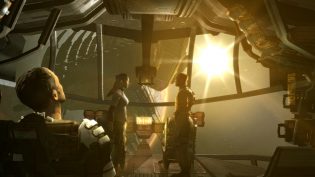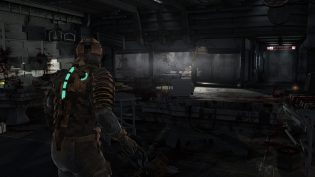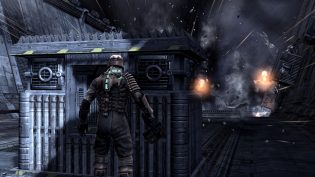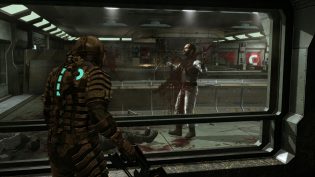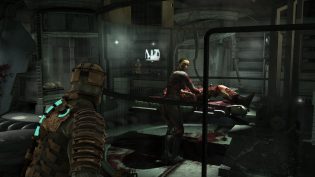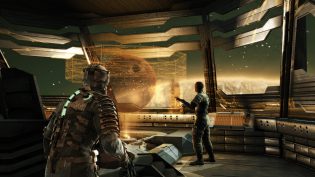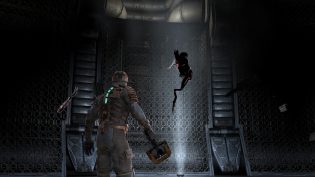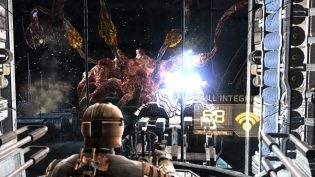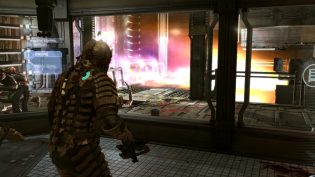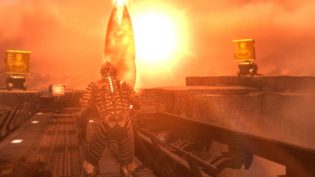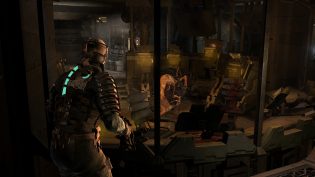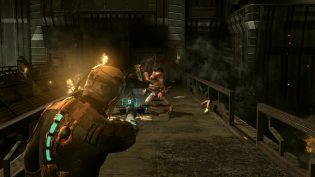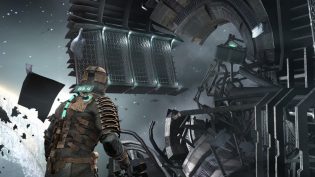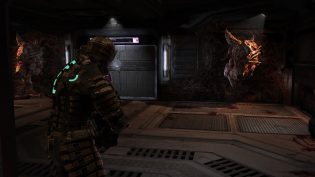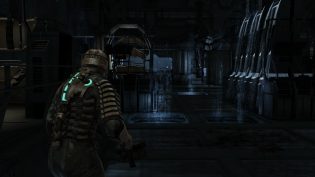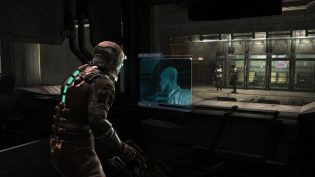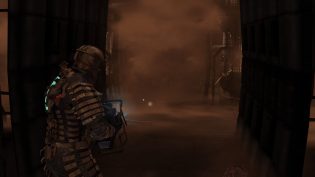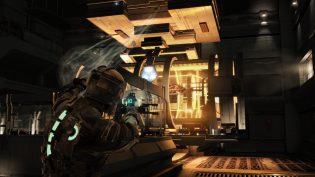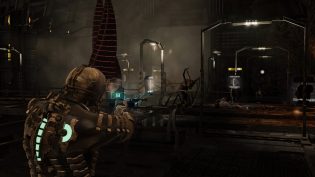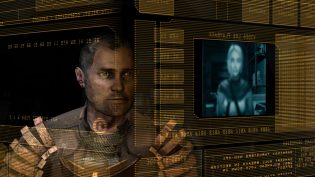O tempora is a series of retrospective posts where I play games from ages before to see if they stood the test of time.
I have quite a few games I love to replay. It doesn’t happen as often as it used to, simply because nowadays we get more games that could be potentially interesting, but I can still sometimes get back to something reliable, something that will be a joy to replay. Usually, games like this simply don’t get old with replays. In some cases, I learn to appreciate them a bit more each time I replay, notice new details. And among games like these Dead Space is a bit of an oddity. I replayed it few times before, and I like doing that. But at the same time, it was never my “go to” game for replays either. Yet, every single time I replay it, my respect for it grows far more than with any other game I replay. And this time was no different. It’s like Dead Space is aging backwards and gets better with each year.
I remember my very first impressions from the game back when it was just released in 2008. “Resident Evil 4, but in space. And better.” Given that back then I didn’t like RE4 much, it wasn’t much of a praise. I liked it enough, but it didn’t wow me all that much. Yet, as months went by, I caught myself thinking about replaying the game again and again, so I gave in and replayed it. That replay was a revelation. I don’t know what did it, honestly, me giving up on holding to that idealized classic survival horror image and accepting that survival action games can be fantastic in their own right? Maybe I got a better gamepad? Maybe I got used to playing more action heavy games with manual aiming with a gamepad? Or maybe I just needed to look at it again and start noticing and understanding all of the little details, the nuances, the touches of brilliance that the game had to truly appreciate the game for what it was. Either way, I started respecting Dead Space more than I ever expected to.
And somehow with each next replay I appreciate it more. It’s been a while since the last replay, so some of the impressions felt fresh. But even moments that I remembered well somehow managed to not simply be “just as good as I remember”, but better. Oh right, perhaps you’re not familiar with the game all that much, so let me give you the overview.
Dead Space is a “survival action” title, a mix of the third person shooter-heavy action adventure with some of the elements that classic survival horror was known for, like resource management, emphasis on “smarter” combat, exploration focus and puzzle elements. Usually, the biggest difference lies in the fact that survival action titles, even when they have interconnected levels and some degree of exploration, are entirely linear, often times clearly divided into segments/chapters, and that they put a far greater emphasis on the action aspects of the experience, with more enemies to deal with, more weapon variety and more reflex-based gameplay. This variation of the action adventure genre was canonized, in a way, by Capcom with Resident Evil 4 (just like they did it with survival horror and RE1) and Dead Space most certainly has a lot in common with the adventures of Leon in Somewhere-in-totally-not-Spain.
It has the RE4 type of tank controls, except right stick is for rotating and left stick allows strafing. Has a similarly claustrophobic close over the shoulder view which gets even tighter when you aim the weapons. Game is very clearly divided into chapters, with the ability to save after each one. There’s a shop and the ability to buy items, weapons, resources and upgrade yourself or your weapons. There’s an ability to perform melee moves, though in Dead Space these are not context sensitive and can be performed at any point, with the hook and a stomp being tied to the shoot buttons while not aiming the weapon. There are other more minor similarities, however the differences turn Dead Space into a very different experience.
The biggest and best known difference in the gameplay focus is, perhaps, the emphasis on dismemberment. In a move that solves so many interesting problems, Dead Space decided to make all of the enemies resistant to what would normally be your approach to action in a third person shooter. Shooting enemies in the body or aiming just for headshots isn’t useless, but will get you killed. The necromorphs, grotesque undead creatures you fight in the game, are weak to losing their limbs. In humanoid shaped ones, it’s the obvious ones, like arms, legs, heads or, when more animalistic, tails as well. With some, it’s tentacles or other thinner appendages. Something that’s usually dealing less damage to enemies in other games is what you must hit in Dead Space.
And this focus also allows the game to solve another problem of survival action titles – with the switch to manual aiming it’s hard to keep the pace of the player slow and methodical, while enemies are more agile. Push it too little and you start seeing how enemy AI or animations are heavily biased in favor of the player. Push it too hard and you have an infuriating game where everything feels too fast and hectic to deal with and it’s terrible to play. But with the focus on dismemberment, you can start inventing weapons that have interesting ways of dealing damage. Take the plasma cutter, the icon of the series, for example – its aiming reticle is not a dot, but a line, one that can be switched to vertical or horizontal aiming. Which means that you don’t have to be super precise when dealing with enemies in a way you’d be in a traditional shooter. This also means, that you can aim/walk and shoot without introducing too much wobble, while still feeling just right and tense in practice. And all of the weapons in a game are like that, they have a certain radius on impact, which means that the game can introduce lots of agile enemies, yet still make you feel in control just enough for the game to feel fun, while also keeping it chaotic enough for you to be tense.
The game is full of these little things, that make the game feel really slow paced and tense, yet at the same time very action heavy and exciting without ever breaking the gameplay, making it frustrating. The stasis ability slows the enemies down, which is vital in both repositioning yourself during any fight or dealing with faster, more agile enemies without completely losing control over the battle. Kinesis ability lets you pick up things at a distance and throw them, which helps with collecting items from farther away while in a fight, without compromising your position and can help block the enemies away or throw explosive or sharp objects at them (something that gets emphasized further in later games). Even the melee, especially on the enemies you slowed down with stasis, can get you out of a sticky situation or help save on ammo.
With this slower pace, incredibly smart enemy encounter design, basic game mechanics the game resembles the classic survival horror far more than any “survival action” title that has been releases since RE4, even up until today. To add to the feeling of the “action evolution of survival horror”, the game even keeps a lot of other elements the survival horror titles had, which were discarded in RE4. Everything inside the game, for example, is technically HUD-less, just like in a classic survival horror, which is achieved by building the visual identity of the game in such a way, where the HUD is a natural part of the game world. The health bar is part of the RIG, a type of a suit all characters are wearing, and it’s used in-world for synchronized overview over the health and location of each person in this world. Ammo counts are holograms on top of the weapons themselves. Holograms also help solve the problem with prompts like “pick up” or “open door” and even allow for an introduction of a objective locator that makes total sense in the game world.
The Foley work in this game is maddeningly fantastic and is one of the best examples of using sound in games I’ve ever heard, somewhere up there along with the Dark Engine titles like Thief: The Dark Project. The way the sound and music are used is just so insanely good, so… perfect. The way how startling every single video call from characters is, the way some weird sounds or whispers are always there, echoes of warning messages or just hallucinations. The way how sounds are dampened when in space and how tense you become as finding the enemies by sound suddenly becomes almost impossible. And how at one point the game teases you with the safety of going back inside the ship only to deafen you with horrid engine noises that make you wish you were back in vacuum of space. The way music can hint you at danger, but never screams at you until you see the danger and realize it, never spoiling the “surprise”.
And the game is also strikingly beautiful 12 years on. Sure, it has aged in terms of pure VFX selection, its edges are more aliased and jaggy than what you’d see even in the sequels, the holograms and even the meters on the RIG are really flat and simplistic. You can tell that it’s a game that was made in a different era of visual capabilities. Yet, I would argue that it’s the best looking game in the series purely on its art direction. When replaying I had moments where I just stopped to make a screenshot and appreciate what I was seeing. And most amazingly – often times it wasn’t even during cutscene moments but scenes left after my intervention, after me moving something or having a fight with necromorphs. The ambiance of the game, beautiful on its own, could suddenly become even more stunning after the player input. And that’s not something you often get in games.
Yet, I haven’t even talked about how constantly full of surprises the game is. If there’s something that has been confirmed times and times again, it’s that if you want to make your horror elements truly effective, they must be unexpected. Titles like Amnesia: The Dark Descent were praised for being inventive in playing with player expectations. But Dead Space might be the only big budget horror themed title to do the same. Especially to the extent it goes. Except for the very basic ideas, you can never truly know what will happen in the game next. Any room can turn out to be safe or dangerous with very few of them being extremely obvious in their “okay, there will be a fight here now” look. Any next room can have some new gimmick to it that might or might not get reused later. You get space walks, turret sections, different kinds of puzzle mini-games, floors that kill everything that touches them, dangerous elements that must be slowed down with stasis to traverse, low gravity rooms, rooms with very low visibility, gigantic open rooms, claustrophobic rooms, unexpected help from others, long corridors, enemies in the save rooms, sudden tentacles, boss fights… There’s so much stuff that might just happen once, and never again. Or happen, then happen again, yet completely subverted.
And same goes for the storytelling, that is brilliant in its pacing and simplicity. With very clear goals and very clear neat setups for what is yet to come. With really interesting characters, despite their sporadic usage. And the silent main character who has a personal stake in everything, where it almost kind of work, despite him being silent.
Though, though this is where I can start criticizing the game as well. Some of the story elements, for all of the amazing world building and storytelling, fall apart. Especially the main story where the biggest twist, which seems like it’s not really meant to be much of a twist, still falls flat due to the logic of the story. It’s essentially the “well, if you would’ve just turned the page and read the last sentence the entire story of the game wouldn’t have happened” kind of deal, where the character doesn’t read said sentence specifically because – the game wouldn’t really happen then. No other good reason is provided within the game or, really, its sequels or supplemental materials.
The game is also potentially problematic on modern systems – turning Vsync off, for example, is not advised. And even with it engaged lots of the ragdoll physics in the game goes absolutely nuts all the time, occasionally ruining the atmosphere. Though, otherwise, it still runs nicely and looks beautiful at higher resolutions without any mods or fan-made tweaks or fixes.
Dead Space remains one of the absolute best crafted games I’ve ever played in my entire life. Despite me not finding it as enjoyable in constant replays like, say, lots of Resident Evil titles, despite it lacking some of the nice quality of life comforts of its sequel and despite me not really getting just how amazing the game is the very first time I’ve played it. It is a gold standard for survival action and even classic survival horror titles and possibly the best example of using the AAA budget in the right spots for a horror game. Despite what happened with the games later, despite the insane push for merchandising EA had even by the point of the game’s original release. It was and still remains one of the absolute greatest action adventure titles in history. And if you haven’t played it yet, you’re seriously missing out.


